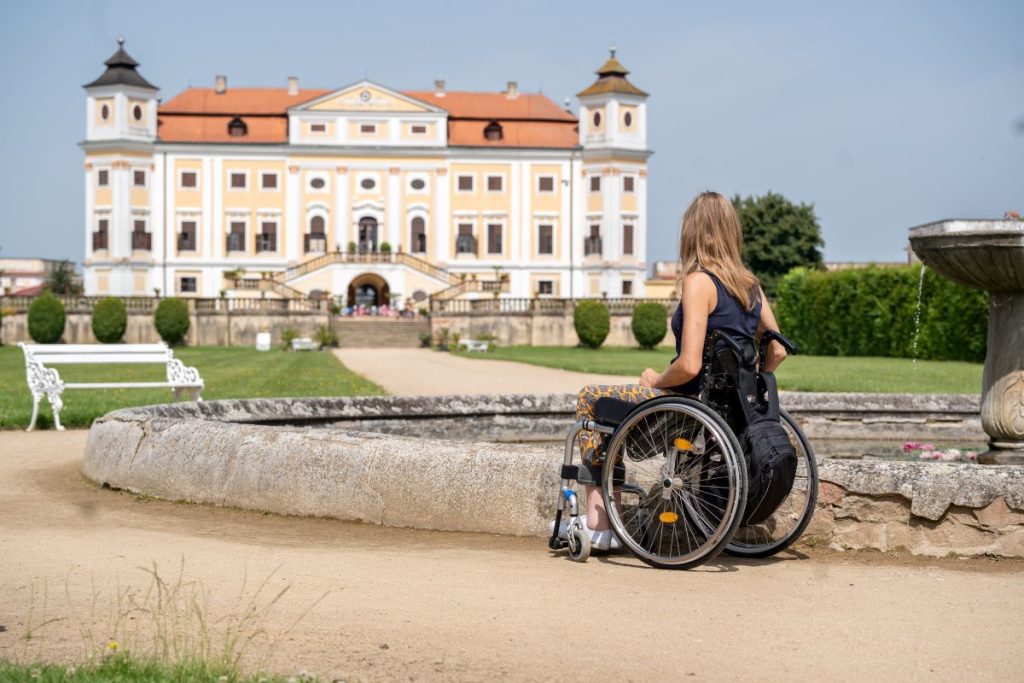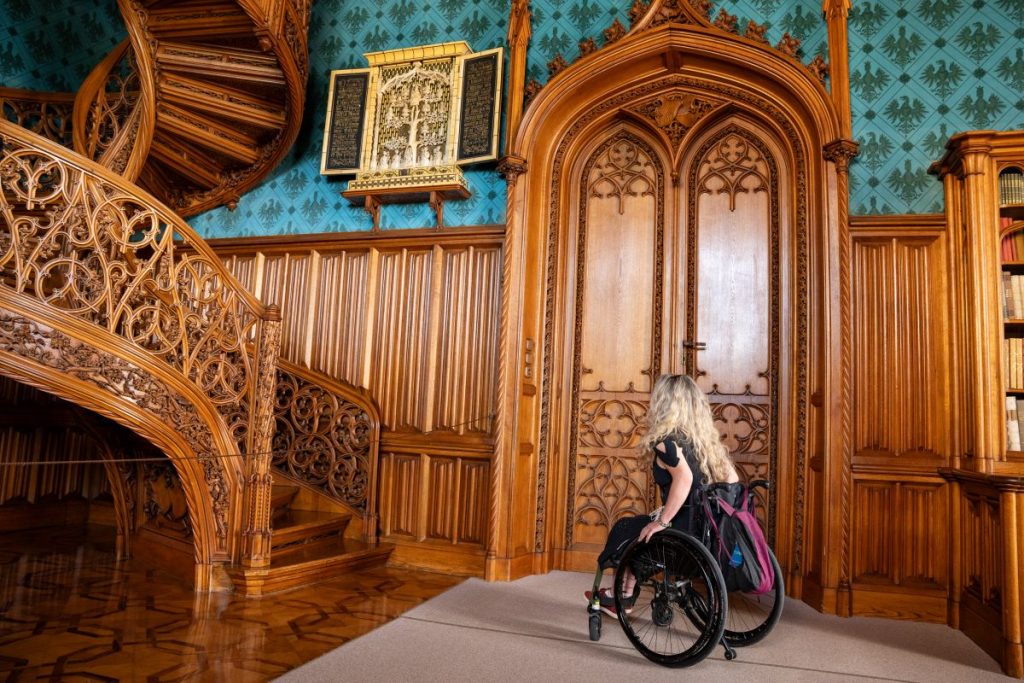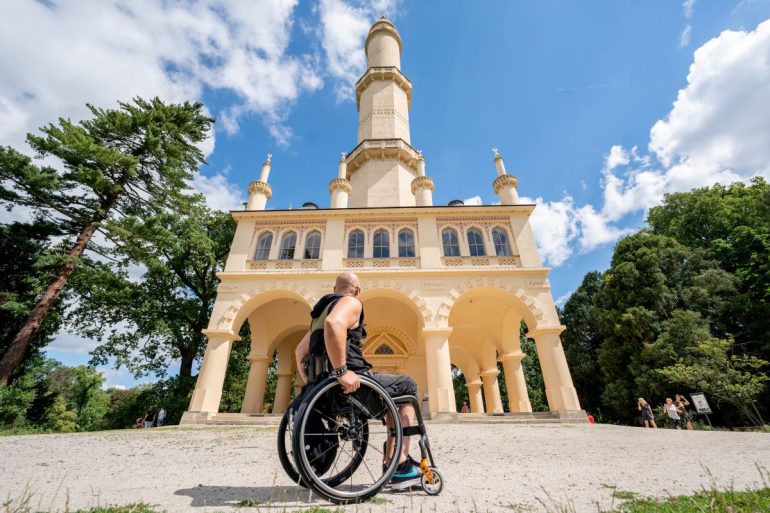Like the rest of the population, wheelchair users are also enthusiastic tourists who like to discover new places by travelling, but often have to face the challenge of unreachable places or unadapted facilities. To address this, the South Moravian Tourism Centre is continuing its partnership with the ParaCENTRUM Fénix association of wheelchair users in order to expand its mapping project South Moravia without barriers. The wheelchair users tested the accessibility of 12 locations selected by the tourism centre this year, before they were added to the map.
Travelling to unknown places for individuals using a wheelchair can be a challenging experience, as tourism is not necessarily synonymous with accessibility. The purpose of the South Moravia without barriers project is to make the South Moravian region a more friendly place for people with reduced mobility, by reimagining better access and accommodation from their perspective.

The director of the South Moravian Tourism Center, Martina Grůzová, explained: “At the beginning of the year, we always select places that we would like to make visible to the target group of wheelchair users – either because they are popular tourist destinations or because they are newly opened or opened after renovation. An experienced team from ParaCENTRUM Fénix will then visit these places and map them in detail.”
The wheelchair users from ParaCENTRUM Fénix first visit the selected locations with a technician and a photographer to record, for example, the narrowness of the passageways, the incline of the roads, and whether they experience any kind of difficulties. The next step is to find a solution to make the areas more accessible, such as by adding a ramp access, removing an obstacle, or making sure wheelchair users have access to all services at their height.
The most challenging part is increasing the accessibility of older structures. Usually, buildings with pavements, such as castles, do not have a usable path for wheelchairs, as well as lacking elevators, while newer buildings typically present fewer problems.
“It is important to record detailed information for individual locations, as the physical abilities of wheelchair users are different. What one person can handle without problems can be difficult for another,” explained Alena Jankotová, volunteer coordinator at ParaCENTRUM Fénix

This year, the participants tested the castle gardens in Milotice, Lednice and Lysice, the village of Jedovnice, the cycle path between Milotice and Mutěnice, and the Sonnentor farm in Čejkovice. The testing of the open-air museum in Strážnice in September was recorded by Czech Television.
For Radek Coufal, a participant in the program, “barrier-free shortcomings are compensated by the willingness and cooperation of the staff. In general, I have to say that a lot of progress has been made in this direction and overall I rate this year’s mapping positively.”
The results of the project South Moravia without barriers are part of the nationwide Vozejkmap guidebook, where it is possible to search for barrier-free tourist destinations in the Czech Republic and abroad. The Vozejkmap object accessibility map is managed by the Czech Association of Paraplegics (CZEPA).






